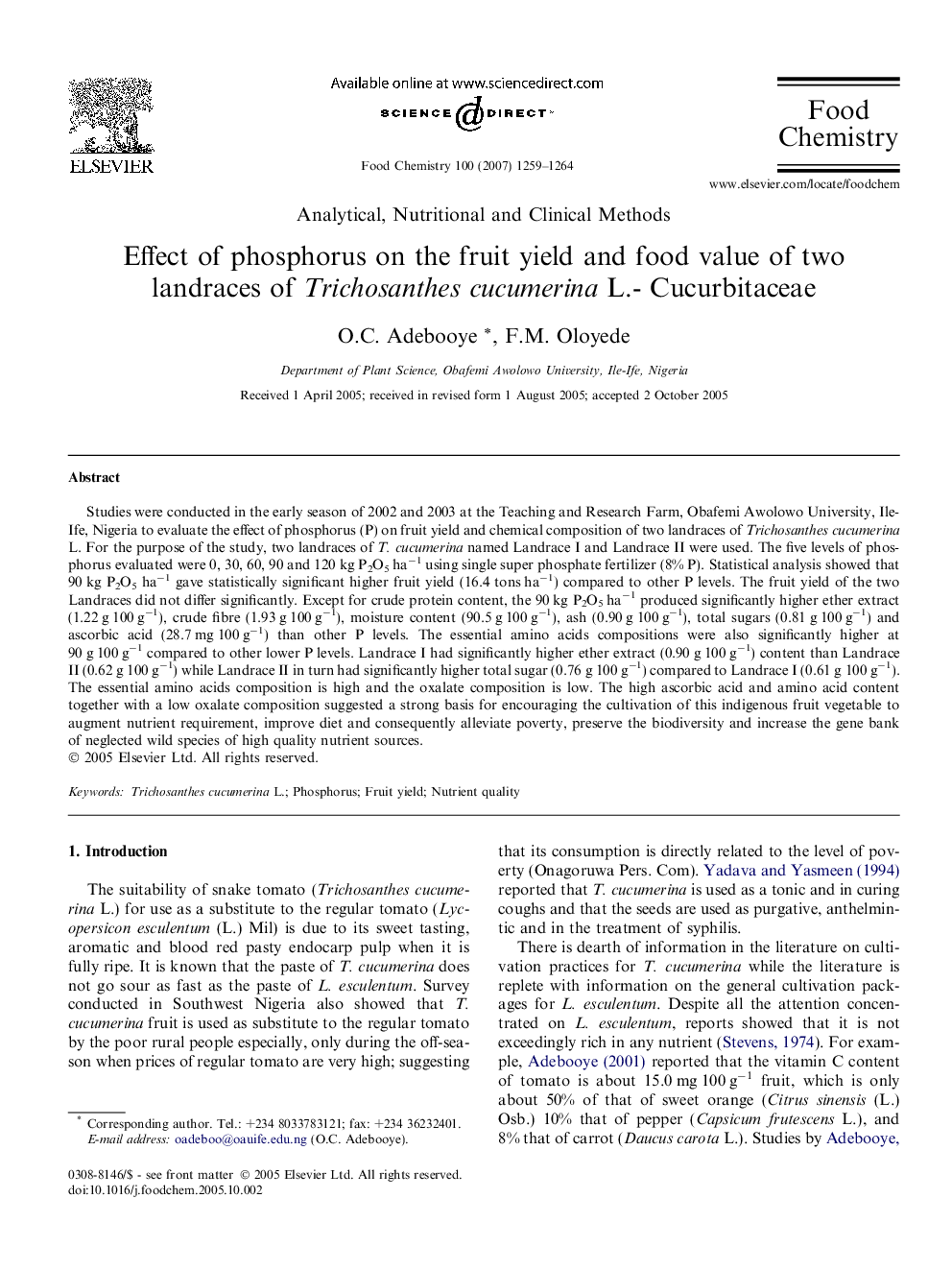| Article ID | Journal | Published Year | Pages | File Type |
|---|---|---|---|---|
| 1190922 | Food Chemistry | 2007 | 6 Pages |
Studies were conducted in the early season of 2002 and 2003 at the Teaching and Research Farm, Obafemi Awolowo University, Ile-Ife, Nigeria to evaluate the effect of phosphorus (P) on fruit yield and chemical composition of two landraces of Trichosanthes cucumerina L. For the purpose of the study, two landraces of T. cucumerina named Landrace I and Landrace II were used. The five levels of phosphorus evaluated were 0, 30, 60, 90 and 120 kg P2O5 ha−1 using single super phosphate fertilizer (8% P). Statistical analysis showed that 90 kg P2O5 ha−1 gave statistically significant higher fruit yield (16.4 tons ha−1) compared to other P levels. The fruit yield of the two Landraces did not differ significantly. Except for crude protein content, the 90 kg P2O5 ha−1 produced significantly higher ether extract (1.22 g 100 g−1), crude fibre (1.93 g 100 g−1), moisture content (90.5 g 100 g−1), ash (0.90 g 100 g−1), total sugars (0.81 g 100 g−1) and ascorbic acid (28.7 mg 100 g−1) than other P levels. The essential amino acids compositions were also significantly higher at 90 g 100 g−1 compared to other lower P levels. Landrace I had significantly higher ether extract (0.90 g 100 g−1) content than Landrace II (0.62 g 100 g−1) while Landrace II in turn had significantly higher total sugar (0.76 g 100 g−1) compared to Landrace I (0.61 g 100 g−1). The essential amino acids composition is high and the oxalate composition is low. The high ascorbic acid and amino acid content together with a low oxalate composition suggested a strong basis for encouraging the cultivation of this indigenous fruit vegetable to augment nutrient requirement, improve diet and consequently alleviate poverty, preserve the biodiversity and increase the gene bank of neglected wild species of high quality nutrient sources.
